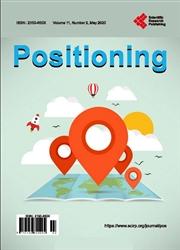Simultaneous Localization and Mapping Solutions Using Monocular and Stereo Visual Sensors with Baseline Scaling System
引用次数: 0
Abstract
In this paper, SLAM systems are introduced using monocular and stereo visual sensors. The SLAM solutions are implemented in both indoor and outdoor. The SLAM samples have been taken in different modes, such as a straight line that enables us to measure the drift, in addition to the loop sample that is used to test the loop closure and its corresponding trajectory deformation. In order to verify the trajectory scale, a baseline method has been used. In addition, a ground truth has been captured for both indoor and outdoor samples to measure the biases and drifts caused by the SLAM solution. Both monocular and stereo SLAM data have been captured with the same visual sensors which in the stereo situation had a baseline of 20.00 cm. It has been shown that, the stereo SLAM localization results are 75% higher precision than the monocular SLAM solution. In addition, the indoor results of the monocular SLAM are more precise than the outdoor. However, the outdoor results of the stereo SLAM are more precise than the indoor results by 30%, which is a result of the small stereo baseline cameras. In the vertical SLAM localization component, the stereo SLAM generally shows 60% higher precision than the monocular SLAM results.基于基线缩放系统的单目和立体视觉传感器的同步定位和制图解决方案
本文介绍了基于单目和立体视觉传感器的SLAM系统。SLAM解决方案可用于室内和室外。SLAM样本采用了不同的模式,例如一条直线,使我们能够测量漂移,此外还有环路样本,用于测试环路闭合及其相应的轨迹变形。为了验证弹道尺度,采用了基线法。此外,还捕获了室内和室外样本的地面真实值,以测量SLAM解决方案引起的偏差和漂移。单眼和立体SLAM数据都是用相同的视觉传感器捕获的,在立体情况下基线为20.00 cm。研究表明,立体SLAM定位结果比单目SLAM定位精度高75%。此外,单目SLAM的室内结果比室外结果更精确。然而,立体SLAM的室外结果比室内结果精度高30%,这是立体基线相机较小的结果。在垂直SLAM定位分量中,立体SLAM的定位精度一般比单目SLAM的定位精度高60%。
本文章由计算机程序翻译,如有差异,请以英文原文为准。
求助全文
约1分钟内获得全文
求助全文

 求助内容:
求助内容: 应助结果提醒方式:
应助结果提醒方式:


